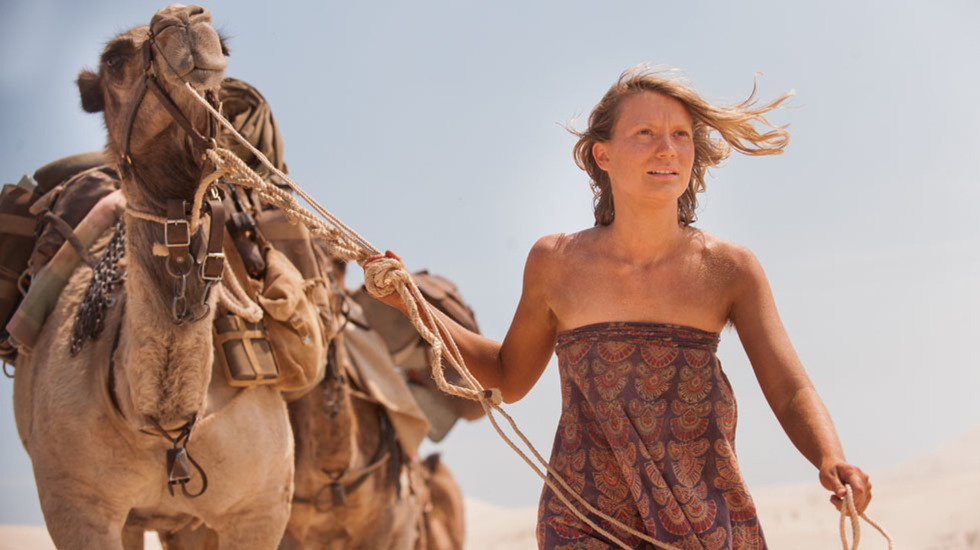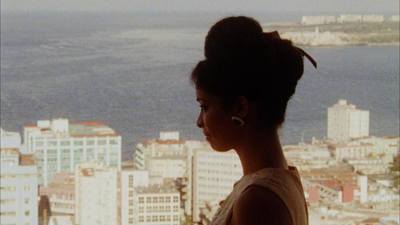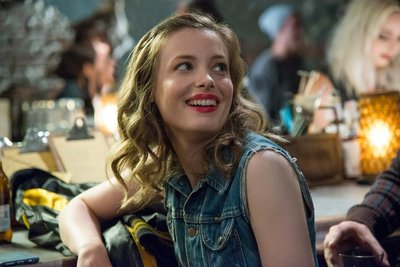
BY ZACHARY WIGON |
John Curran on 'Tracks,' Mia Wasikowska and Solitude
Curran's latest stars Mia Wasikowska in the true story of a 1,700-mile trek across the Australian desert.

John Curran's latest, Tracks, is set in 1977, but as I watched the film I kept being struck by the timeliness of the true story it's based on. Adapted from a memoir by Robyn Davidson, the film follows Davidson (Mia Wasikowska) as she sets out to travel across 1,700 miles of Australian desert with the aid of nothing except for a few camels and her dog. A journey of solitude and self-discovery, the trip is complicated by the fact that it's sponsored by National Geographic, which means that photographer Rick Smolan (Adam Driver) will be checking in with Robyn to photograph her intermittently. As Davidson's journey becomes increasingly meditative - but also increasingly arduous - her relationship with Smolan develops, and she finds herself receiving an unwanted level of fame. It's a strikingly timely story of a woman who only wants some privacy, but ends up being thrust far into the public eye. I had the chance to speak with Curran recently about the film.
Tribeca Film: What initially drew you to this story?
John Curran: I was living in New York in the 80s and decided to move to Australia. When I was traveling down there I came across Robyn's book, which, in the mid-80s, was a cult favorite. I didn't read it then, but I heard about it, and years later when I read it I was reminded of that time in my life. I was drawn to the idea of the distinct period of life when you're out of college but not yet into your career, when the idea of doing something radical, pushing yourself outside of your comfort zone, for a reason you can't even explain, comes to you.
Tribeca Film: That stage of adulthood was conveyed so strongly by Mia Wasikowska. So many different shadings, so much nuance in her performance. What was your work with her like?
JC: We wanted to really catch the idea of solitude, and we wanted to build it so that it wasn't a wordy film, it would be a film that would allow Mia to just be. We wanted her to be able to express a lot of what's going on inside her through her actions, through what she's doing. We knew the book would always be there, in some voice overs, but we wanted to allow for the idea of her being alone to have resonance, and partially that was conveyed through its opposite, through showing what relationships she was missing out on. But Mia is one of those people that expresses a lot by being very still, and I wanted to use that.
Tribeca Film: There's something very physical about her performance.
JC: She's pretty remarkable. And very smart - she has a lot going on in her head, and even when she's still you get that sense that there's a complex brain up there.
Mia is one of those people that expresses a lot by being very still, and I wanted to use that.
Tribeca Film: You mentioned the idea of solitude, which is interesting, because it's a word that's not used all that often, which makes some sense when you consider how technologically linked the world is today. Can you speak to the film's contemporary relevance?
JC: I grew up without cable television, and I remember TV not being a big part of my life. I remember working for years without cell phones. I have a lot of experience that my son's generation doesn't have - he was just born into it. I've taken him up to our cabin where there's no cell phones and all that, so he's had some experience of that, but it's so hard to sustain that nowadays. So I think Robyn's trip is that much more remarkable today than it was back in the 70s - the idea of someone not being connected for six months is so remarkable.
Tribeca Film: Right. Her journey is really arduous, but it's also a bit seductive, to be alone like that.
JC: You know, I like camping in the woods, I like the idea of being isolated. Being in the desert, it's pretty remarkable in that there are no intrusions - everywhere you look, it's flat. Sound quality is completely unique, the way the wind works, there are no echoes. It's really peaceful. The more time I spent there, the more I understood the appeal.
Tribeca Film: Can you talk about how you went about conveying the feel of the desert? The heat, the oppressive quality of it.
JC: Well, I went into it thinking that I didn't want to do a film where every shot was just a person against a wide red background with someone cutting across the frame. The DP and I talked about it a lot, and we realized one of the unique things about shooting in the desert is you have a stage with no obstructions, so you can put the action hundreds of yards away and you can shoot it on a tight lens, say, and then you can cut to a really wide lens for a close-up, and get away with it, and it feels disorienting to watch. We wanted people to feel the desert the way Robyn did, we wanted to make it beautiful, but we didn't want to do a travelogue - we wanted the locations to match the emotional development she's going through.
So this thing that she did without any agenda ended up defining her whole life.
Tribeca Film: Her development is really striking, especially how, later in the film, we can see that the solitude she's been seeking is disrupted by the tourists who track her down to take her photo, which alarms her. It's ironic because she is taking this journey that's about solitude and privacy, but she can only get it financed by letting National Geographic cover it.
JC: There are a lot of ironies to it. For Robyn, it was kind of a Faustian pact, taking the money from National Geographic. She did it quite willingly, but I think she regretted it instantly. It's an interesting part of her character. After the journey was over, when she wrote an article for National Geographic, it sort of turned into her career, this journey. So this thing that she did without any agenda ended up defining her whole life. In the pursuit of solitude and privacy she ended up becoming a very famous person in Australia. She did something so extreme that, if anyone caught wind of it, it was inevitable that she was going to get attention for it.
Tribeca Film: Of course, while she does regret taking the money, she does develop this relationship with Rick Smolan, played by Adam Driver. How did Adam come to be involved? I thought he did a wonderful job.
JC: I had the real life Rick, who's kind of like an eager puppy, a million ideas, he talks a lot, he's the antithesis of Robyn, who's quiet and reserved. So I was looking for someone who could be kind of a foil to her, someone who you could empathize with. I came across Adam because he'd started doing Girls - I read about him, though I didn't see the show - anyway, my casting person knew him and he became involved.
'Tracks' opens in select theaters September 19.

